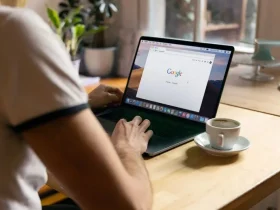Congratulations on taking the first step toward creating a stunning WordPress website. If you were using Softaculous Apps Installer on WordPress version 6.2, you must have seen a message that looks like this after successfully installing WordPress;

Seeing that congratulations message is an exciting moment that can fill you with anticipation and satisfaction—especially if this is your first WordPress website. After all, you’ve just successfully set up one of the most powerful Content Management Systems (CMS) trusted by millions of other webmasters online. WordPress powers more than 39% of websites on the Internet.
Before you can start creating and uploading content on your new WordPress website, there are important WordPress tips for beginners you can’t afford to miss. If you miss any of the tips or steps, there is a risk of running into usability issues or even being a victim of sneaky online attacks like the Man in The Middle attacks (MiTM), where malicious actors steal your or your customers’ confidential information.
You don’t need to worry, though, as these tips are easy to implement. In this how-to-install WordPress guide, we’ll walk you through all the crucial steps you should take after installing WordPress on your domain to set you up for success. Keep reading!
What is the Most Important in WordPress Installation?
If you’re like many first-time website owners, you must be wondering, “What is the most important in WordPress Installation?” The answer to this question may vary depending on what you’re trying to achieve with your new WordPress website.
However, in many cases, the most important aspect of WordPress installation is security. There are several essential security measures you should take when setting up a new WordPress website.
Key among them is SSL certificate installation and implementing strong login credentials. (We’ll explain more about SSL later in this guide). Other than SSL, you’ll also want to ensure that your website is accessible to visitors using different devices, including desktops and mobile phones. Here is a quick roundup of five other things to do after WordPress installation;
1. Add a Contact Form
If you search online for “WordPress tips for beginners,” adding a contact form to your new WordPress website is one of the tips that will appear predominantly in the guides you open. Having a contact form on your website is important as it encourages communication.
It makes it easier for your web visitors to get in touch with you, something which can help you build trust with them. A contact form can also help you reduce spam, as many come with anti-spam measures like captcha codes that can help you filter out unwanted messages from spammers and bots.
2. Deleting Sample Posts and Pages
After installing WordPress and opening your new site, you will find default posts and pages on the website like “Sample Page” and “Hello Word,” etc. These pages and sample posts may vary depending on the themes you selected during installation.
If you used a default WordPress theme like 2021, for example, which we have used in the illustration below, you may see something like this;

The function of these sample posts and default pages is to give you a rough idea of your website’s appearance and function. You should not use them as actual content. You shouldn’t even retain them as they may make your website look disorganized and unprofessional.
They may also impact your rankings on Search Engine Results Pages (SERPS), as search engines like Google tend to penalize sites with duplicate content. To delete these sample posts and default pages, open your dashboard and then navigate to the posts or pages section under the dashboard.

After that, check-mark the default pages and sample posts you want to remove and select “Move to Trash” in the bulk options drop-down menu to delete them. See the illustration below;

3. Install an SSL certificate on your WordPress website.
Secure Sockets Layer (SSL) certificates are digital security certificates for encrypting the data shared between websites and visitors’ browsers. When you correctly install an SSL certificate on your WordPress website, you will enable Hyper Text Transfer Protocol Secure (HTTPS). It’s what establishes secure connections between your website and your web visitors’ browsers. With secure connections, you can rest assured that your visitors’ confidential data are secure. The best part is that with a valid, correctly installed SSL certificate, your visitors’ browsers won’t throw non-secure warnings that can scare them away. Most importantly, you also enjoy an SEO advantage over competitors who have yet to switch to HTTPS, as Google and many other search engines prefer HTTPS sites.
4. Optimize your Site for Search Engines
You will want to have your website optimized for SEO if you want it to have better online visibility and reach target audiences. To optimize your new WordPress website for SEO, you may want to begin with On-page optimization.
This involves optimizing the website’s content, site title, and meta description so it remains relevant for search engines and users. You will also want to optimize your website content with the keywords your target audience uses for search, ensure it loads quickly to reduce bounce rates, and build high-quality backlinks from reputable websites. Real quick, some plugins you will want to install to optimize your website for SEO include All in One SEO Pack and Yoast SEO.
5. Establish a Backup Solution
A good backup solution could just be what you need to shield yourself from data loss due to issues like malware or site crashes etc. And WordPress makes it very easy to do this.
With backup plugins like Jetpack or UpdraftPlus, it’s easy to set up a backup solution in seconds. You may also want to work with a hosting provider that provides complimentary backups.
It’s a Wrap!
And that’s it! Launching a WordPress website doesn’t have to be stressful, even for non-techies. And if you ever feel stuck, simply search for the issue you’re facing online. Chances are high you’ll find in-depth guides like this or YouTube tutorials to help you out.










Leave a Reply